I'm trying to make the UINavigationController's UINavigationItem retract upon scrolling a WebView's UIScrollView (just like it does in Safari).
Desired behaviour
This code works on iOS 12:
let statusBar: UIView = UIApplication.shared.value(forKey: "statusBar") as! UIView
if statusBar.responds(to:#selector(setter: UIView.backgroundColor)) {
statusBar.backgroundColor = UIColor.LinguaBrowse
}
See how the WKWebView's content extends only as far as the UIStatusBar when the UINavigationBar retracts, and note how the UIStatusBar is coloured and opaque.
Images: (1) Navbar visible; (2) Navbar retracted.
Actual behaviour since iOS 13
While I can colour the statusbar in iOS 12, I can't do so in iOS 13 as they've changed the APIs of status bar (you can no longer get a reference to it), so the original methodology no longer works.
This code snippet has been suggested in Swift: Change status bar color for iOS 13 and Change status bar colour on iOS13, but it acts very differently (quite apart from the fact that it doesn't respond to changes in device orientation).
if #available(iOS 13.0, *) {
if let firstWindow = UIApplication.shared.windows.first,
let statusBarFrame = firstWindow.windowScene?.statusBarManager?.statusBarFrame {
let mockStatusBar = UIView.init(frame: statusBarFrame)
mockStatusBar.backgroundColor = UIColor.red
firstWindow.insertSubview(mockStatusBar, at: 1)
}
}
Note: I've coloured the mock status bar red for ease of debugging, but I'd ultimately change it to a matching blue colour once finding a working setup.
In screenshot (4), I show what the status bar looks like without having applied that code (it looks fine, as the toolbar's background colour fills it).
In screenshot (5), I show how the status bar looks if we use that code snippet to make a red mock status bar.
In screenshot (6), I show how, whether we've executed that code snippet or not (it's the same either way), the status bar is found to be transparent and the scrollview extends all the way to the top of the UIViewController. The view debugger shows that the red mock status bar is in the right position, but is somehow (despite being a child of the UIWindow) at a layer below that of the UIScrollView. So I don't think that adjusting its z-index will change anything.
Images: (4) Navbar visible (statusbar left unchanged); (5) Navbar visible (with mock statusbar inserted); (6) Navbar retracted - same result for either approach.
I've been trying various different approaches for days and can't find any way to restore the behaviour that I had working in iOS 12. I just want an opaque, coloured status bar (or something that looks and acts like it). Does anyone have some guidance?




